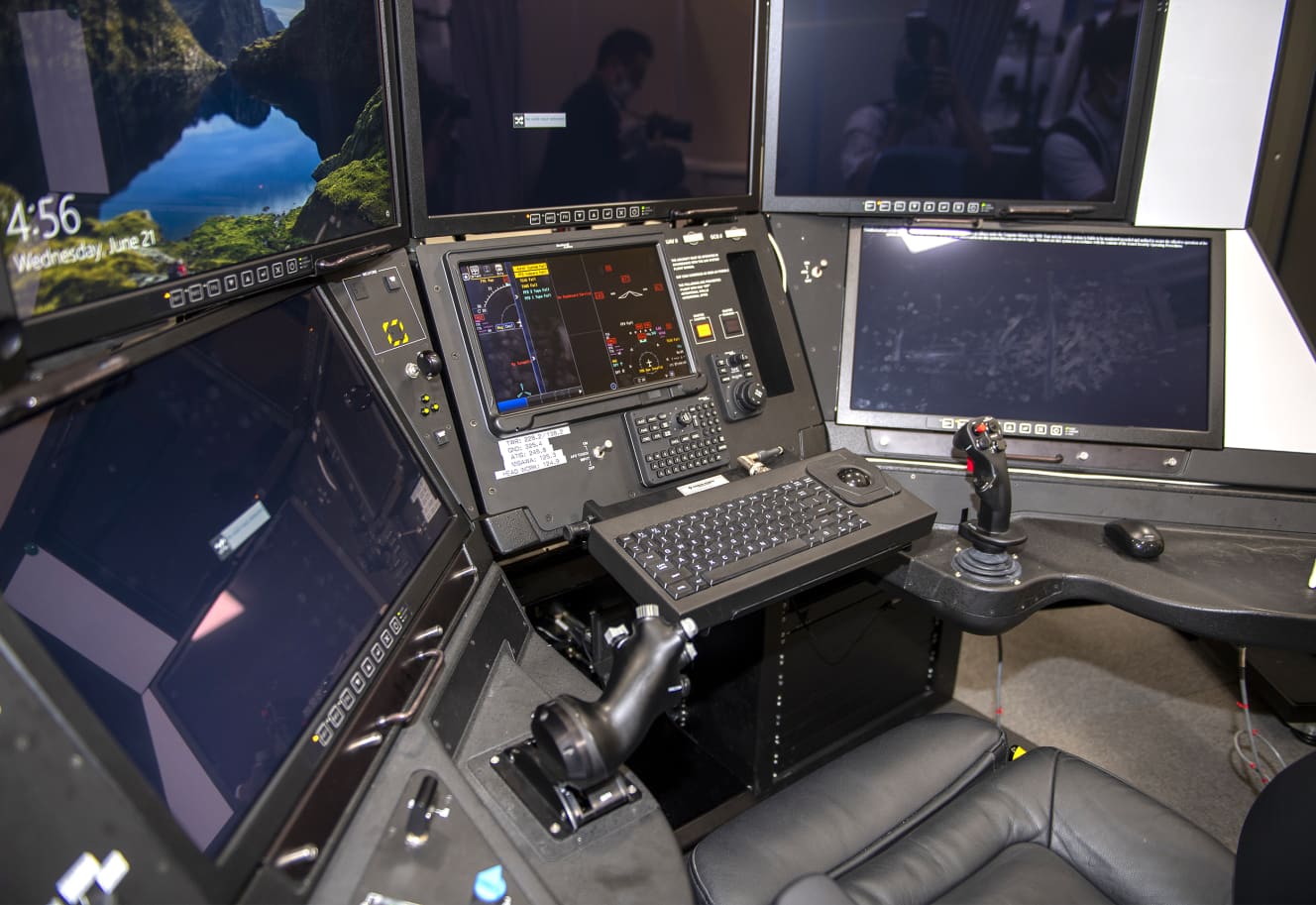The latest Self-Defense Force drones are a “game changer” on the battlefield, offering nothing but advantages.
The Air Self-Defense Force's "Global Hawk" flies for 36 hours straight, while the Maritime Self-Defense Force's "Sea Guardian" was converted from an unmanned attack aircraft.

Ukrainian military drones track Russian soldiers fleeing from trenches from the sky. When a certain number of soldiers gathered, they dropped bombs on them and rounded them up.
In Palestine, scenes of Hamas drones costing tens of thousands of yen destroying Israeli tanks costing over a billion yen have been seen, and modern warfare is no longer possible without drones. The Ministry of Defense, having witnessed the results and cost-effectiveness of drones, which have become a “game changer” on the battlefield, has finally decided to deploy them on a full-scale basis.
The Ground Self-Defense Force was the first to introduce drones in the land, sea, and air. In the 1980s, the Ground Self-Defense Force began development with Fuji Heavy Industries (now Subaru), and by 2002 had mass-produced the remotely piloted observation system, FFOS.
The initial purpose of the system was to check the impact of a field gun (cannon) flying up to 30 km away. This was converted into the unmanned reconnaissance aircraft system FFRS, which was deployed in 2007, but it had the disadvantage of requiring a considerable amount of vehicles and equipment for its flight, including an airframe carrier, control equipment, and a set of radar equipment.
Therefore, the Land Self-Defense Force focused on researching civilian drones and the drones of other countries’ militaries. Yamaha’s agricultural drones for spraying pesticides were used as UAVs, and the “Sky Ranger,” a development of the civilian drones that fly with propellers, was deployed in 2006. These are dedicated to low altitude and have a flight time of only a few dozen minutes. In order to conduct continuous, long-duration reconnaissance operations, in the following year of ’19, the deployment of the “ScanEagle 2,” an unmanned reconnaissance aircraft for mid-air areas, began.
It was developed by the U.S.-based Boeing Insitu. With an overall length of 1.7 m and a wingspan of 3.1 m, it has a body the size of an adult male, an engine, and a propeller on the tail. A fighter jet can fly for barely an hour, but the “ScanEagle 2” can fly continuously for 18 hours. It has a maximum speed of approximately 150 km/h and a maximum altitude of approximately 6,000 m. It is equipped with a high-definition camera on the nose.

Capabilities equivalent to a reconnaissance satellite
On January 23 of this year, the RQ-4B Global Hawk was deployed to the newly formed Reconnaissance Air Wing at Misawa Air Base (Aomori) of the Air Self-Defense Force. This is a large drone with an overall length of 14.5 meters and a wingspan of approximately 40 meters, manufactured by the U.S. company Northrop Grumman, and is capable of continuous flight for 36 hours. The U.S. military began operating the drone in 2004, and it has been deployed in the Iraq War, and its capabilities can be said to be comparable to those of a reconnaissance satellite.
For example, the Global Hawk, which flew from Misawa to the East China Sea upon receiving news of an incident in Taiwan, caught a bird’s-eye view of the Chinese fleet and a formation of bombers and other aircraft from a high altitude of 18,000 meters. The Global Hawk’s huge antenna in the nose section and various radars and sensors inside and on the underside of its fuselage capture faint radio waves, enabling it to share information on the number, speed, and communications of warships and bombers with the Prime Minister’s Office and the Ministry of Defense in real time.
The Maritime Self-Defense Force also introduced reconnaissance drones this year. Although still on a trial basis, the MQ-9B Sea Guardian has been deployed from Hachinohe Air Base (Aomori) since May 9. The drone is based on the MQ-9 Reaper, an attack drone developed by U.S.-based GA and operated by the U.S. Air Force, and has a wingspan of 24 meters, which is quite long. The fuselage is also long and slender at approximately 12 meters.
A visible infrared camera mounted on the lower part of the nose is said to be able to identify the type of vehicle on the ground even from the height of Mt. A large bulge under the fuselage carries a radar for marine surveillance.
In addition to its reconnaissance capabilities, Sea Guardian is also unique in its operational methods.
The Sea Guardian is operated by GA under the direction of the MSDF. Since the main mission of Sea Guardian is patrolling and not attacking, it is possible to “outsource” the mission. The Ministry of Defense is facing an important issue of “mission outsourcing” as it becomes increasingly difficult to maintain the various units due to the declining birthrate and aging population.
The Maritime Self-Defense Force plans to use drones in the future to perform some of the alert surveillance currently carried out by P-1 and P-3C patrol aircraft.
The SDF, both land, sea, and air, finally has a variety of drones for reconnaissance, but it is expected to go even further and deploy offensive drones in the future.
For example, the Ground Self-Defense Force has AH-1S and AH-64D combat helicopters equipped with machine guns and missiles, but the government announced in the “Three Security Documents” approved by the Cabinet last December that it intends to abolish these helicopters in the near future. Drones are expected to replace combat helicopters.
The Ministry of Defense has not revealed the details of its deployment plan, but voices on the ground say that “attack drones, which can solve the shortage of pilots and aircraft and reliably destroy the enemy with pinpoint accuracy, can only be seen as an advantage. Japan’s national defense is likely to be entrusted to robots – unmanned aerial vehicles.




From the November 24, 2023 issue of FRIDAY
Photography and text by: Masayuki Kikuchi